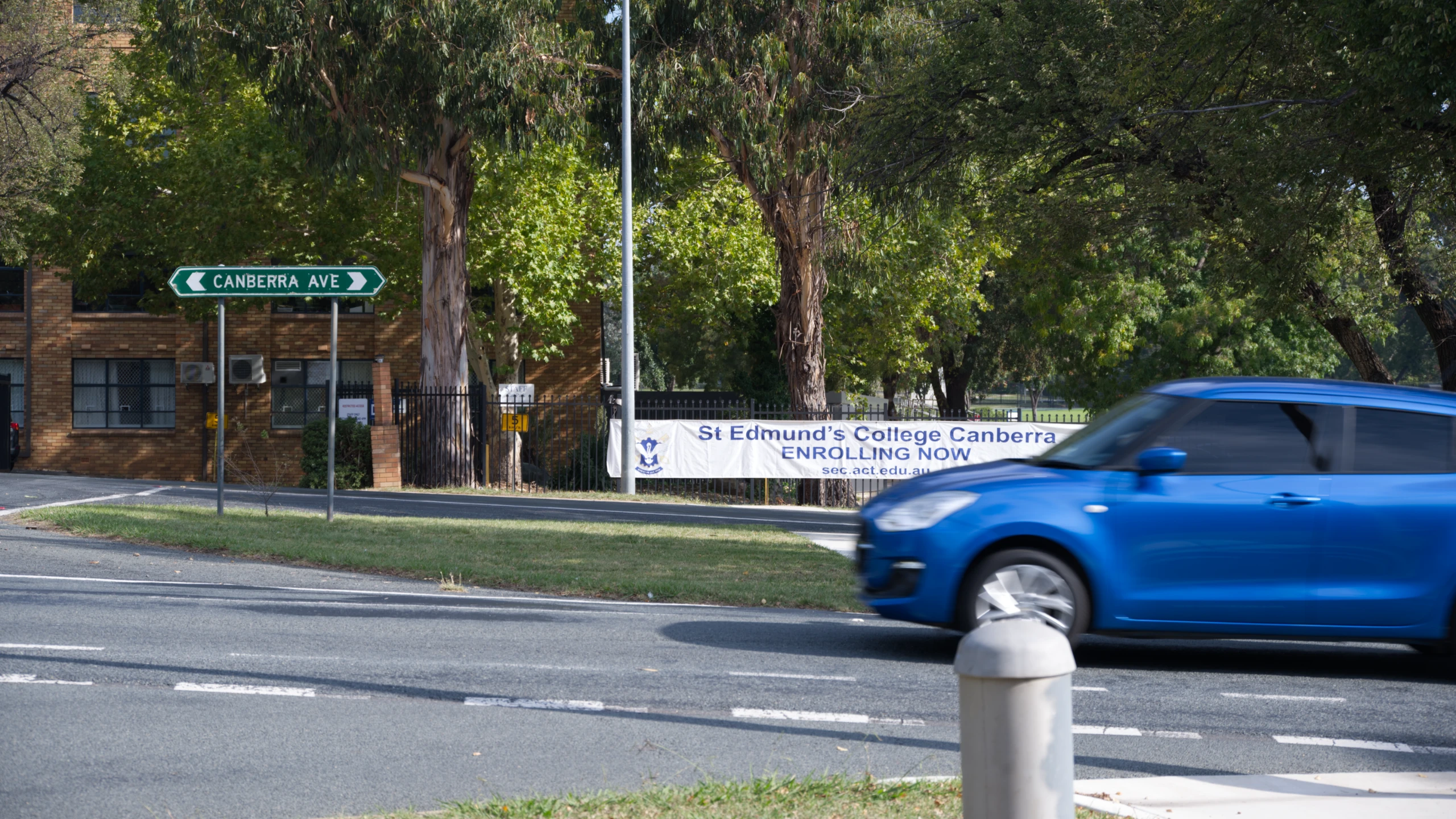The family of one of the survivors of the recent hit-and-run at St Edmunds College has suggested installing a pedestrian overpass over Canberra Avenue. As an Old Boy who has also long demanded change on Canberra Avenue, I agree that something needed to be done yesterday about this dangerous road.
It is understandable that victims of such crimes would wish for a solution that would (at least appear to) entirely prevent incidents like what was done to them. But that doesn’t mean that it’s a good idea, even if an Assembly petition requesting it has already received over 500 signatures and the support of a member of parliament.
The cost of such a bridge would be immense for minimal benefit, but that’s somewhat beside the point. People shouldn’t have to worry about the cost to protect their children. So instead, I’ll focus on the problems that such infrastructure would create.
The overpass will not fit
The first problem, one which should surely end the discussion, is that an overpass simply cannot fit along the stretch of Canberra Avenue adjacent to the College.
For any ramp to meet accessibility standards, it must run at least fourteen metres for every metre of rise.
Canberra Avenue is an arterial road without obvious alternatives for tall traffic, like cargo trucks, and so an overpass would have to rise at least 5.4 metres so the tallest trucks with big antennae attached can pass under unencumbered.
From kerb-to-kerb outside Eddie’s, Canberra Avenue is about 40 meters wide. Add 75.6 meters (that’s 14 times 5.4) to each side, you now have a bridge that is a touch under 200 meters long. Increase the height to 6.5 meters, for extra clearance for the tallest trucks, and now you have a bridge that is about 225 metres long.
Needless to say, unless Eddies’ wants to give up an oval or nearby residents give up their homes, it won’t fit. You also can’t curve the ramp up to the bridge without blocking people’s (or the school’s) driveways or other roads.
An overpass sends the wrong message
Now, of course, you could use stairs or lifts to make a much shorter overpass, but what happens when the lifts break down or are vandalised?
If you use stairs, or a tighter gradient, where does that leave people with mobility problems, wheelchairs, walkers, or who are crossing with bicycles?
What invariably happens is that the bridge leaves them on the road where drivers are no longer looking for them because they are ‘not supposed’ to be there. In several studies of cities collated by the Institute for Transportation and Development Policy, the most car-pedestrian collisions occurred in areas with more pedestrian overpasses.
It also extends pedestrians walk by – as said above – an extra hundred-or-so meters. That may not sound like a lot, but consider statistical evidence that shows that the average person typically walks up to 600 meters to a destination. The bus stop the two boys were walking from, a bus stop I used to use as an Eddie’s Boy, was already around 400 meters away from the school. Now, surely, the solution to the problems caused by a busy road is not to push more people into cars on that road.
Given the above evidence, it should not surprise that there is also plenty of evidence from around the world that, even where overpasses are technically accessible, pedestrians continue to cross at ground level anyway. In one study, as many as 46% of pedestrians chose to cross the street under the studied overpasses (instead of over) despite knowing that such crossings were dangerous. 14% of these respondents said that they crossed under because they physically couldn’t get up the overpass.
Supposed benefits of a bridge, such as better traffic flow, presuppose that the street and its surrounds should be designed for distant commuters’ cars and not for the people that live and go to school there.
What should happen instead?
The government is planning to install a signalised crossing at the intersection of Canberra Avenue, Barrallier Street, and Cunningham Street. This is the best of a bunch of bad solutions. For one, it doesn’t needlessly extend one’s walk up and over the street. It also stops (law-abiding) traffic.
A school zone is another possibility and the idea that such zones are undesirable on arterial roads, suggested by Minister Steel responding to a previous petition to the Assembly in 2022, is balderdash. As I’ve written here before, Pennant Hills Road in Sydney, perhaps the archetypal busy Australian street, has multiple school zones.
It is correct, as the family pointed out, that none of these solutions would have stopped the hit and run. But for the reasons addressed above, neither would the overpass!
Canberra Avenue needs a solution, but we should look to the Avenue itself and not to the sky for answers.
We acknowledge the Ngunnawal and Ngambri people, who are the Traditional Custodians of the land on which Woroni, Woroni Radio and Woroni TV are created, edited, published, printed and distributed. We pay our respects to Elders past and present. We acknowledge that the name Woroni was taken from the Wadi Wadi Nation without permission, and we are striving to do better for future reconciliation.
